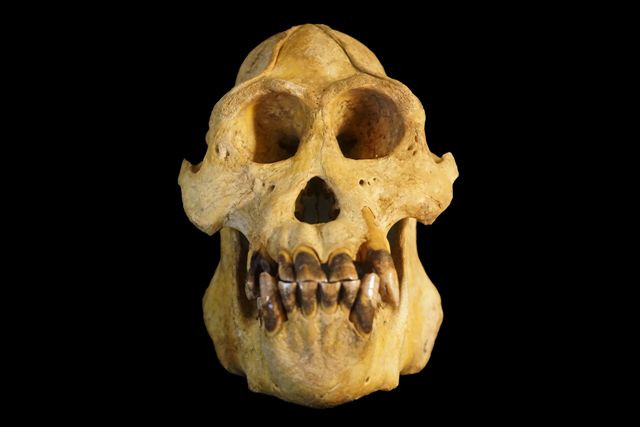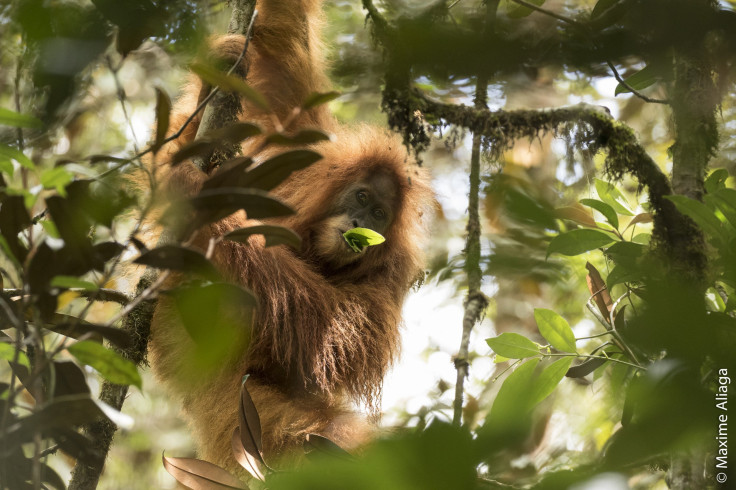Pongo Tapanuliensis: Third Orangutan Species Identified, Already Facing Severe Extinction Risk

Other than humans, the surviving great ape species today number six: chimpanzees, bonobos, eastern and western gorillas, and Sumatran and Bornean orangutans. But a seventh great ape has now been identified by scientists: a third species of orangutans they have named Pongo tapanuliensis.
An isolated population of orangutans — first discovered in 1997 by researchers from the Australian National University and now with fewer than 800 individuals — that lives within the three Tapanuli districts in North Sumatra, Indonesia, is actually a species distinct from the two previously known ones. The first clue that P. tapanuliensis was a species all on its own came from the skull of a male killed in 2013, which showed different characteristics of the teeth and the skull itself.

"We were quite surprised that the skull was quite different in some characteristics from anything we had seen before," Matt Nowak, who researched the morphological characteristics as part of his PhD thesis at the University of Zurich (UZH), and now works for the Sumatran Orangutan Conservation Programme, said in a statement Thursday.
But P. tapanuliensis was confirmed as a separate species on the basis of a genomic study, the largest on wild orangutans ever conducted. It combined new genome sequencing of 37 orangutans with previous study results that also showed three lineages.
"We identified three very old evolutionary lineages among all orangutans, despite only having two species currently described," Maja Mattle-Greminger, a postdoctoral researcher at UZH, said in the statement.
Genetic analysis revealed that the oldest split in orangutan’s evolution happened over three million years ago, between the Batang Toru population in Tapanuli and Bornean orangutans to the north of Lake Toba. It was less than 700,000 years ago that the Bornean and Sumatran species became distinct from each other.
"The Batang Toru orangutans appear to be direct descendants of the initial orangutans that had migrated from mainland Asia, and thus constitute the oldest evolutionary line within the genus Pongo," Alexander Nater, also of UZH, said in another statement. "The Batang Toru population was connected to populations to the north until 10,000 or 20,000 years ago, after which it became isolated."
While new species are discovered often, especially as scientists use modern techniques like genome sequencing, it is highly unusual for a new great ape species to be identified in the 21st century, since they are among the most extensively studied animals on the planet.
Erik Meijaard of the Australian National University said: "Great apes are among the best-studied species in the world. If after 200 years of serious biological research we can still find new species in this group, what does it tell us about all the other stuff that we are overlooking: hidden species, unknown ecological relationships, critical thresholds we shouldn’t cross? Humans are conducting a vast global experiment, but we have near-zero understanding of what impacts this really has, and how it could ultimately undermine our own survival."

P. tapanuliensis has only just been identified as a new species, but it already faces severe risk of extinction. Fewer than 800 individuals is already a very small number, and dangers like hunting and the loss of its lowland habitat threaten its survival.
"It is very exciting to discover a new great ape species in the 21st century. All conservation efforts must focus on protecting the species’ environment," Michael Krutzen of UZH, who was principal author of the study, said in the statement.
"If steps are not taken quickly to reduce current and future threats and to conserve every last remaining bit of forest, a great ape species may become extinct within a few decades," Nowak added.
The paper announcing the discovery is titled "Morphometric, behavioral, and genomic evidence for a new orangutan species" and it appears online Thursday in the journal Current Biology.
© Copyright IBTimes 2024. All rights reserved.




















